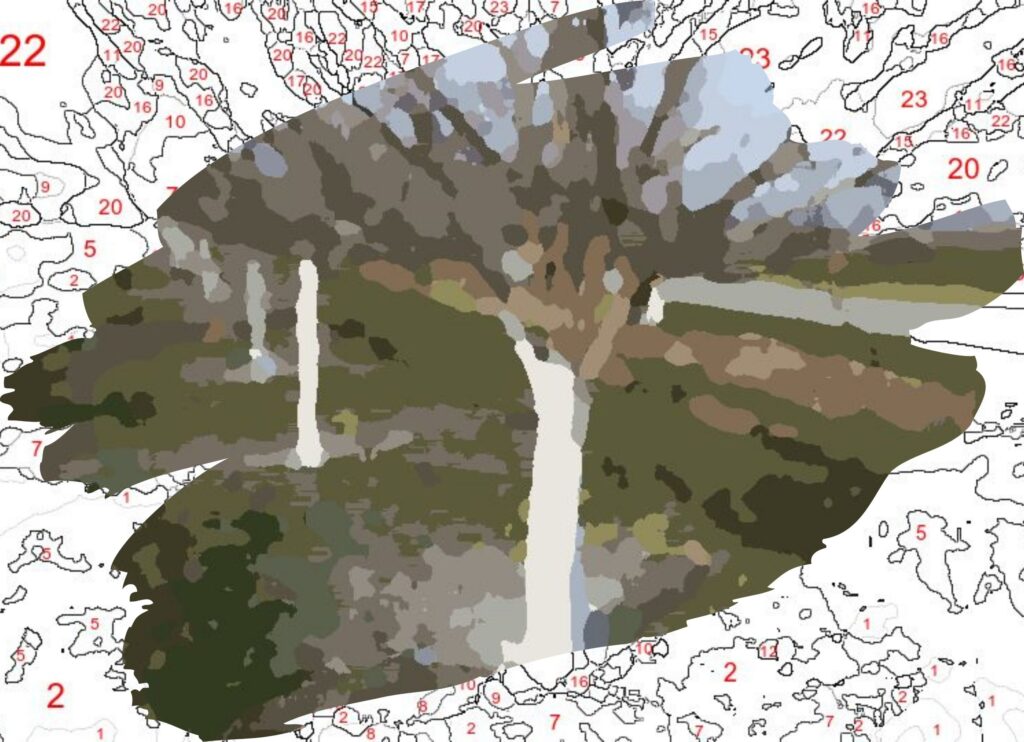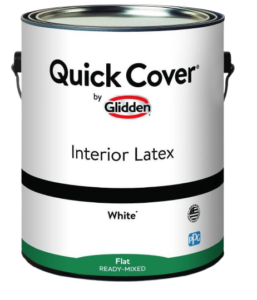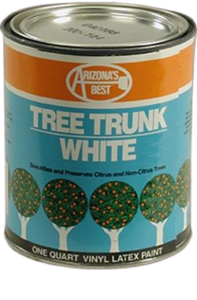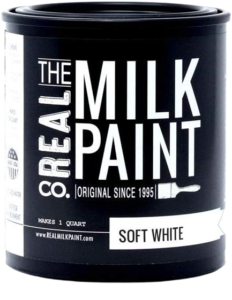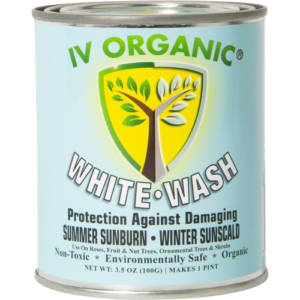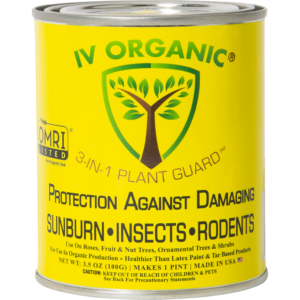How to Shield Pawpaw Trees from Winter Stress and Damage
This post contains affiliate links. As a member of Amazon Associates, I may earn a commission on qualifying purchases at no cost to you.
There’s still time for growers to mark off fall checklist to-dos.
It’s important to prepare your pawpaw trees for the colder months. Whitewashing trunks is a tried-and-true method that can offer vital winter protection. This task can be accomplished while temperatures are at or above 50°F with no rain in the forecast for 24–48 hours.
This practice is commonly used for thin-barked fruit trees like pawpaws (especially in orchard settings). It helps guard against southwest injury, which is a form of bark damage caused by temperature fluctuations that result in sunscald or frost cracking.
Applying a light-colored paint reflects sunlight, preventing the bark from warming up too quickly during sunny winter days and minimizing the risk of sudden, damaging temperature drops.
Additionally, certain paint blends can include natural repellents, such as essential oils, to deter critters and even discourage insects like borers from targeting vulnerable trees.
Before and After:
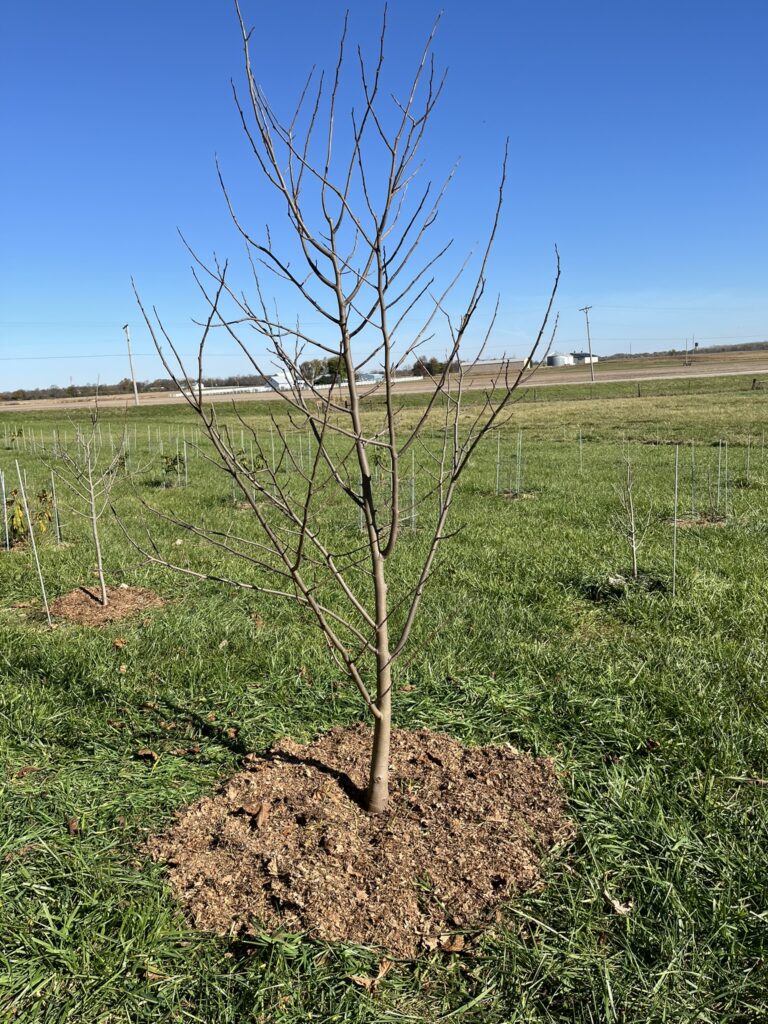

Gather Your Supplies
Before you start, make sure you have all the essentials on hand for prepping and painting your pawpaw tree trunks. Having the right tools will help you get the job done effectively and efficiently.
- Soft Cleaning Brush: Use a soft-bristled brush to gently remove dirt and debris from the tree trunks before painting. (Tip: Check automotive stores or look for shoeshine brushes.)
- Paint: Choose a light-colored paint that’s safe for tree bark. See the next section for a comparison of options that work well on pawpaw trees.
- Paint Brush: Opt for a paintbrush with bristles that will give you good coverage on the trunk without damaging the bark.
- Paint Mixing Stick: A sturdy mixing stick helps you blend the paint and any additives evenly.
- Paint Mixing Cup: Use a small container or mixing cup to blend and hold the paint before application.
- Gloves: Protect your hands from paint and other materials by wearing gloves throughout the process.
With these supplies ready, you’re all set to prepare and protect your trees.
Choosing the Paint
When it comes to shielding your pawpaw trees from winter stress and damage, deciding on the right paint is key. There are several synthetic and organic paint choices available on the market, each with its own set of benefits and considerations.
Latex paints are the most cost-effective but be sure to select interior latex paint only. Exterior latex paints or special blends contain additives that could be irritating and unsuitable for trees.
If you’re looking for an organic alternative, be prepared for a higher price point. Organic paints offer a safer, chemical-free solution. However, you’ll need to refrigerate any leftover mixed paint due to limited shelf life (follow label instructions).
While white paint is common for its reflective properties, you can opt for other light colors like greige, which will also help protect the trunk from the sun’s rays. The table below outlines the cost, preparation, and safety details for each type of paint to help you make an informed choice.
Market prices as of November 2024 excluding sales tax and shipping expense
Glidden Quick Cover Interior Latex Paint Flat
Organic: No
Preparation: Create 50/50 mix of paint and water
Storage: Close container after use
Safety Data Sheet
Price: $0.11 per ounce
Arizona’s Best White Vinyl Latex Paint
Organic: No
Preparation: Ready to use
Storage: Close container after use
Safety Data Sheet
Price: $0.23 per ounce
.
Real Milk Paint
Organic: Yes
Preparation: Add water – follow mixing directions
Safety Data Sheet
Storage: Mixed product (liquid) requires refrigeration
Price: $1.19 per ounce
IV Organic White Wash
Organic: Yes
Preparation: Add water – follow mixing directions
White Wash Label
Price: $2.18 per ounce
Storage: Mixed product (liquid) requires refrigeration
IV Organic 3-in-1 Plant Guard
Organic: Yes
Preparation: Add water – follow mixing directions
Plant Guard Label
Storage: Mixed product (liquid) requires refrigeration
Price: $2.50 per ounce
Steps for Painting Pawpaw Tree Trunks
Protecting your pawpaw trees from winter stress is straightforward with proper preparation and application. Follow these steps to safeguard your trees:
- Clean the Tree Trunk: Gently remove any dirt or debris with a soft brush to ensure the paint adheres properly.
- Prepare the Paint: Mix or dilute the paint as directed, depending on the product you’re using.
- Apply Coats: Start with a thin coat of paint on the trunk, especially focusing on large, exposed areas facing direct sunlight (southwest angles). Build up layers as needed for full coverage.
- Maintain Regularly: Check your painted trunks every 6–12 months. Touch up as necessary to maintain a protective barrier, especially if you notice any wear.
Bonus Tip: Tree ID
Labeling pawpaw trees with clear and durable identifiers is an essential step in managing your cultivars.
There are pros and cons to traditional options such as plastic plant labels, aluminum tags, garden stakes, or embossed metal tape. Some stand up to the elements over time while others do not fare as well.
A creative and cost-effective solution is painting the cultivar name directly onto the tree trunk. This method not only ensures lasting visibility, but it also helps with recording your fruit harvest, making it easier to track and share your pawpaws.
To keep it simple, a three-letter code works well (for example: “OVR” for Overleese, “SHN” for Shenandoah, and “JOY” for Maria’s Joy). With the right tools, such as rubber stamps or stencils, you can keep your pawpaw trees organized and thriving all year long.

